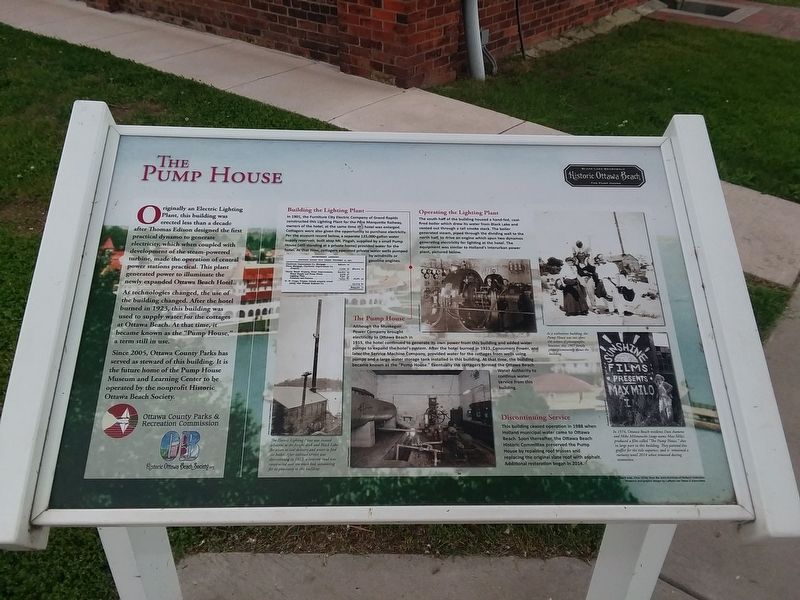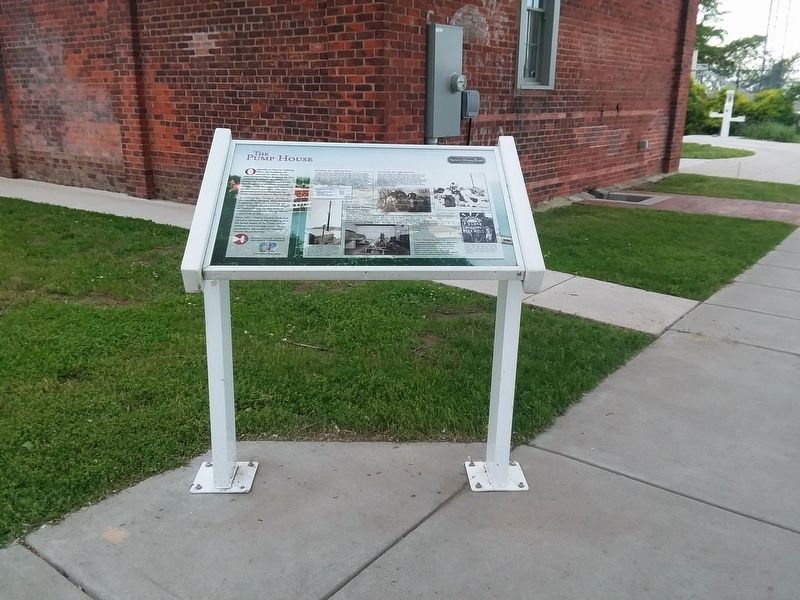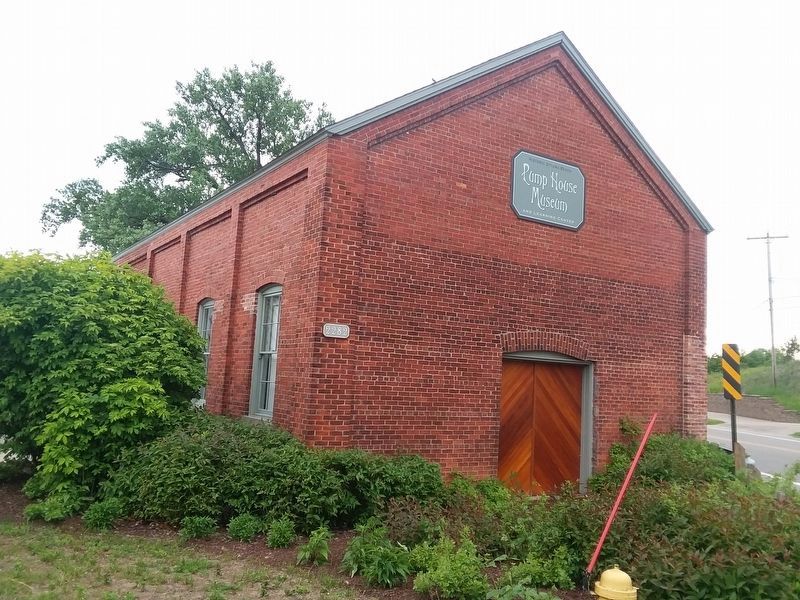Ottawa Beach in Holland in Ottawa County, Michigan — The American Midwest (Great Lakes)
The Pump House
As technologies changed, the use of the building changed. After the hotel burned in 1923, this building was used to supply water for the cottages at Ottawa Beach. At that time, it became known as the "Pump House," a term still in use.
Since 2005, Ottawa County Parks has served as steward of this building. It is the future home of the Pump House Museum and Learning Center to be operated by the nonprofit Historic Ottawa Beach Society.
Building the Lighting Plant
In 1901, the Furniture City Electric Company of Grand Rapids constructed this Lighting Plant for the Père Marquette Railway, owners of the hotel, at the same time the hotel was enlarged. Cottagers were also given the opportunity to purchase electricity. Per the account record below, a separate 125,000-gallon water supply reservoir, built atop Mt. Pisgah, supplied by a small Pump House (still standing at a private home) provided water for the hotel. At that time, cottagers operated private water wells pumped by windmills or gasoline engines.
Operating the Lighting Plant
The south half of the building housed a hand-fed, coal-fired boiler which drew its water from Black Lake and vented out through a tall smoke stack. The boiler generated steam, piped through the dividing wall to the north half, to drive an engine which spun two dynamos generating electricity for lighting at the hotel. The equipment was similar to Holland's interurban power plant, pictured below.
The Pump House
Although the Muskegon Power Company brought electricity to Ottawa Beach in 1915, the hotel continued to generate its own power from this building and added water pumps to expand the hotel's system. After the hotel burned in 1923, Consumers Power, and later the Service Machine Company, provided water for the cottages from wells using pumps and a large water storage tank installed in this building. At that time, the building became known as the "Pump House.” Eventually the cottagers formed the Ottawa Beach Water Authority to continue water service from this building.
Discontinuing Service
This building ceased operation in 1988 when Holland municipal water came to Ottawa Beach. Soon thereafter, the Ottawa Beach Historic Committee preserved the Pump House by repairing roof trusses and replacing the original slate roof with asphalt. Additional restoration began in 2014.
Photo captions:
The Electric Lighting Plant was located adjacent to the freight dock and Black Lake for access to coal delivery and water to feed the boiler. After railroad service was discontinued in 1913, a concrete road was constructed over the track bed, accounting for its proximity to this building.
As a utilitarian building, the Pump House was not often the subject of photographs: however, this 1907 family photo prominently shows the building.
In 1974, Ottawa Beach residents Dan Aument and Mike Milonowski (stage name Max Milo) produced a film called "The Pump House,” shot in large part in this building. They painted this graffiti for the title sequence, and it remained a curiosity until 2014 when removed during restoration.
Erected by Ottawa County Parks & Recreation Commission, Historic Ottawa Beach Society.
Topics. This historical marker is listed in these topic lists: Industry & Commerce • Waterways & Vessels. A significant historical year for this entry is 1923.
Location. 42° 46.467′ N, 86° 12.1′ W. Marker is in Holland, Michigan, in Ottawa County. It is in Ottawa Beach. Marker is on Ottawa Beach Road south of Black Lake Avenue, on the right when traveling north. Touch for map. Marker is at or near this postal address: 2282 Ottawa Beach Rd, Holland MI 49424, United States of America. Touch for directions.
Other nearby markers. At least 8 other markers are within 4 miles of this marker, measured as the crow flies. Ottawa Beach (about 400 feet away, measured in a direct line); Holland Harbor Lighthouse / Holland Harbor (approx. half a mile away); Holland Harbor / Holland Harbor Lighthouse (approx. 0.6 miles away); Central Park Chapel (approx. 2.1 miles away); Marigold Lodge (approx. 2.4 miles away); Waukazoo Woods (approx. 2½ miles away); Graafschap Christian Reformed Church (approx. 3.8 miles away); The First Pioneers of Graafschap (approx. 3.8 miles away). Touch for a list and map of all markers in Holland.
Credits. This page was last revised on August 5, 2023. It was originally submitted on January 22, 2021, by Craig Doda of Napoleon, Ohio. This page has been viewed 155 times since then and 14 times this year. Photos: 1, 2, 3. submitted on January 22, 2021, by Craig Doda of Napoleon, Ohio. • Mark Hilton was the editor who published this page.


